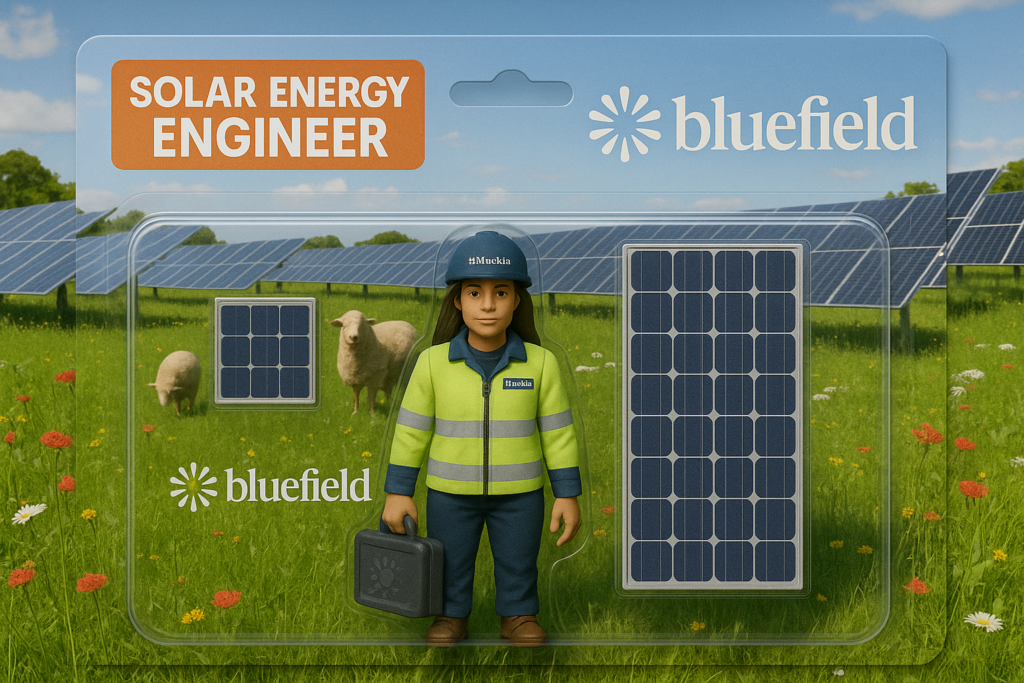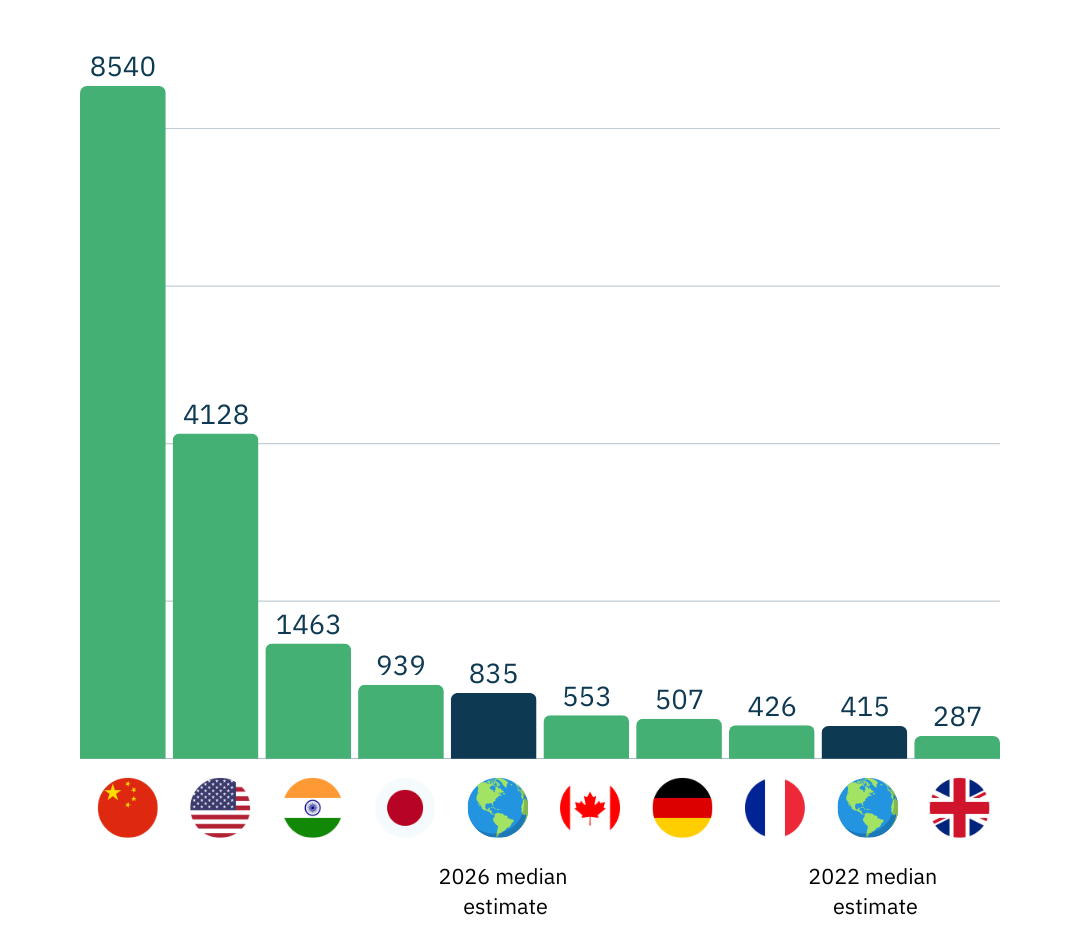The rise of AI has prompted questions over how to satisfy the technology’s significant energy requirements. In this article, Director of Market Development and Corporate Affairs, Kim Daye, considers how solar energy may play a role in achieving this.
In recent years, Artificial Intelligence (AI) has become the hot topic within financial markets, with the trajectory of global stock markets, and by extension, global economies, increasingly tethered to the technology.
While AI has seamlessly integrated into our daily lives through predictive text and devices like Amazon’s Alexa, it was the advent of generative AI –the process of converting existing datasets into new content and applications – that caught the attention of the corporate world. As a result, AI-related companies drove stock markets, and news headlines, throughout 2024, with companies such as NVIDIA and Palantir growing at a startling rate.
This rise in demand for AI products, alongside the growing digitisation of the global economy more broadly, has increased the need for efficient and sustainable data centres. These centres underpin the digital economy by housing servers, cloud storage capabilities, and critical network infrastructure.
While the growth of the AI industry is undeniably full of possibilities, it poses a challenge due to its substantial energy consumption, and potential impact on net zero targets.
In its most recent Electricity report, the International Energy Agency (IEA) noted that in 2022, AI, data centres and cryptocurrencies consumed circa 460 terawatt hours of electricity – just shy of 2% of global electricity usage.
To put this into perspective, a recent study suggested that utilising AI to generate an image (such as the one we’ve created below) used as much energy as fully charging a smartphone, while another showed that generative-AI prompts required anywhere between ten and one hundred times more electricity than a standard internet search query. Advancements within our digital economy, particularly in artificial intelligence, will undoubtedly demand significant energy resources. This growing energy consumption could, in turn, challenge the net zero commitments of technology providers. For instance, Google disclosed last year that the energy usage of its data centres had adversely impacted its environmental objectives.
Herein lies the opportunity for renewable energy infrastructure and more specifically, solar energy.

Hey Siri, find me a sustainable power source for GenAI
One of the most promising opportunities for institutional investors lies in the co-location of data centres with solar energy projects. By integrating renewable energy sources, such as solar power, into the design and operation of data centres, investors can achieve several key benefits:
- Sustainability: Co-locating data centres with solar energy projects significantly reduces their carbon intensity, aligning with global efforts to combat climate change.
- Cost Efficiency: Solar energy can provide a stable and cost-effective power supply, reducing reliance on the grid and mitigating the impact of fluctuating energy prices .
- Energy Security: On-site renewable energy generation enhances the resilience of data centres, ensuring a more consistent power supply.
- Regulatory Compliance: Governments around the world are implementing stricter environmental regulations. Investing in renewable energy co-located with data centres can help meet these requirements and avoid potential penalties.
As the demand for data centres grows in line with the advancement of AI, co-located solar installations are increasingly being adopted as the primary energy source. For example, Ark Data Centres, which operates six data centres throughout the UK, has exclusively utilised renewables to power its facilities over the past six years, with solar energy being a key component.
Other renewable energy sources mooted connected to data centres include wind and nuclear.
Estimated electricity consumption of data centres compared to
selected countries in TWh

A policy push for renewable energy
Aware of AI’s significance as a driver of growth and their existing Net Zero commitments, policymakers across Europe have been seeking a sustainable solution for these energy-hungry facilities.
The UK government’s recent announcement about the creation of AI Growth Zones underscored the importance of data centres in driving economic growth and innovation. These zones, designed to streamline planning approvals and improve energy connections, will serve as hubs for AI development and attract global investment. The first AI Growth Zone will be established in Culham, Oxfordshire, with more zones to follow. To facilitate this, the UK government has introduced its ‘AI Opportunities Action Plan’ which highlights the importance of sustainable energy solutions for powering AI infrastructure.
Similarly in Europe, the European Commission adopted a bloc-wide scheme last year, designed to rate data centre sustainability. The recast ‘Energy Efficiency Directive’ has not only set a target of reducing the EU’s energy consumption by 11.7% by 2030 but will also promote the use of renewable energy sources to data centres. Given that solar panels generated 11% of the EU’s electricity in 2024, it stands to reason that solar may prove a choice solution for many data centres.
As a result of these the policy tailwinds, institutional investors have a unique opportunity to contribute to this transformative shift. By funding and developing co-located data centres and solar energy projects, they can drive innovation, enhance sustainability, and achieve long-term financial returns. The time to act is now, as the demand for data and AI continues to surge, and the need for sustainable solutions becomes increasingly urgent.
In conclusion, the co-location of data centres with solar energy projects represents a win-win scenario for institutional investors, the environment, and the broader economy. By embracing this approach, investors can play a pivotal role in shaping the future of technology and sustainability.


